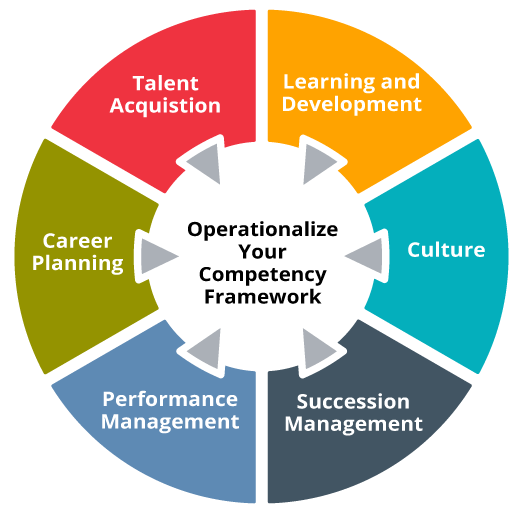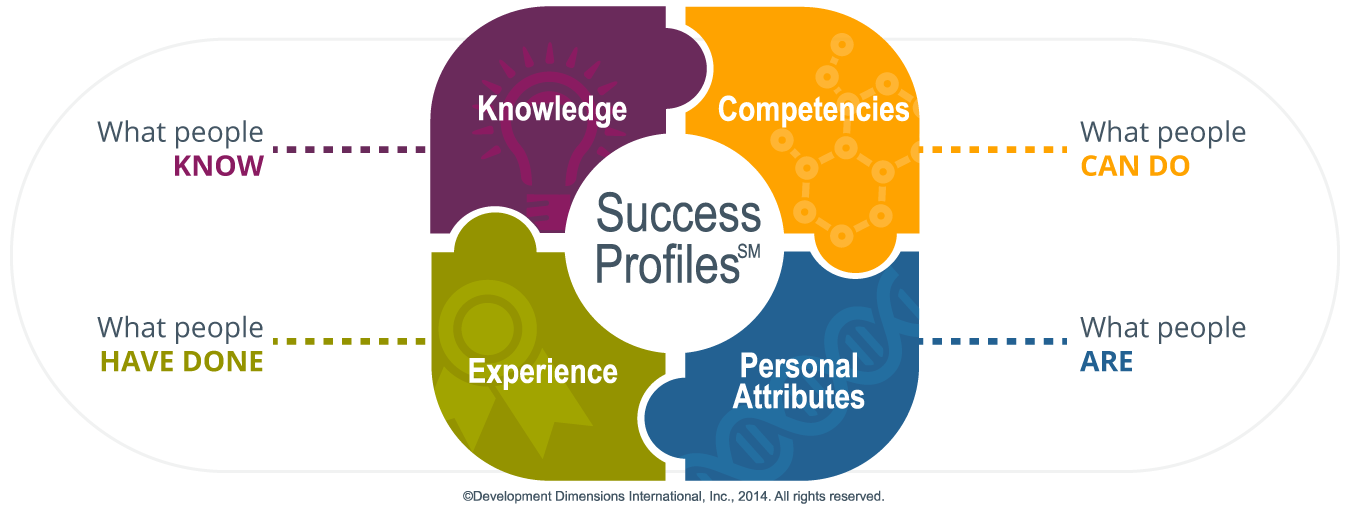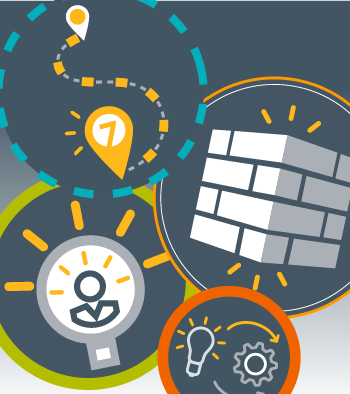What Does Great Leadership Look Like?
Getting to the bottom of this question involves building a leadership competency framework. Without a framework, how can you evaluate your leaders? And more importantly, how can leaders evaluate themselves?
Building a plan for great leadership depends on identifying the behaviors and competencies that leaders need to show.
A leadership competency framework helps you to clearly define your leadership goals and how they will enable your organization to succeed. It also creates a common leadership language that aligns the expectations and actions of leaders at all levels and roles. Leaders know what is expected of them and what they can expect from others. Ultimately, this common leadership language drives consistent behaviors and helps to shape your company culture.
At DDI, we define five key elements that make a great competency framework:
- Built on your business strategy (see previous section on Business Drivers)
- Focused on well-defined competencies based on observable behaviors
- Differentiated by level
- Operationalized
- Timely

What Is a Competency?
A competency is a cluster of specific behaviors and abilities—interpersonal skills, leadership skills, business management skills, and/or personal attributes—that define effective performance in a role.
Leadership competencies may seem easy to understand conceptually, but leadership doesn’t happen inside one’s head. It happens when leaders successfully influence the attitudes and behaviors of others.
The Characteristics of Great Competencies
Strong competencies have the following characteristics:
- Clearly defined: Many competencies offer broad definitions, but don’t get specific about exactly what the competency looks like in practice.
- Behavioral: You need to define the behaviors a leader should use to perform the competency.
- Observable and measurable: Behaviors related to the competency need to be observable and easy to measure so leaders can receive feedback on their performance of the competency.
- Useable in numerous talent management processes: Competencies need to be consistent across processes, including hiring, promotion decisions, assessments, and development. Without consistency, it’s hard to measure competency mastery and progress.
- Provide a framework for coaching and feedback: Team members should be able to give specific feedback about how someone is performing actions based on behaviors outlined in the competency.
- Appropriately specific (not too broad or too narrow): It’s important to be specific enough to know what a behavior looks like, but not so specific that the behavior is limited to a particular role or function.
For these reasons, we put a lot of emphasis on the key actions of a competency. Here’s an example of a DDI leadership competency:
Competency:
Building Partnerships
Definition:
Developing and leveraging relationships within and across work groups to achieve results.
Key Actions:
- Seeks opportunities to build relationships—Proactively builds effective working relationships with those who have the knowledge, experience, resources, or influence to advance work goals.
- Clarifies shared goals—Exchanges information about the situation/task to determine mutually beneficial goals and outcomes; identifies issues and concerns; summarizes to check understanding.
- Develops others’ and own ideas—Contributes own ideas and expands on others’ ideas.
- Facilitates agreement—Gains commitment from partners to support ideas or take action; uses sound rationale to explain value of actions; confirms agreements, next steps (who will do what by when), needed resources and support, and how to track progress.
- Supports partners—Offers valuable information, resources, and/or time to accomplish win-win outcomes; places higher priority on group goals than on own goals.
- Involves others—Asks others for their opinions and ideas to gain their support when clarifying the situation, developing solutions, exploring needed resources, and committing to action.
- Maintains and enhances self-esteem—Shows others that they are valued by acknowledging their specific contributions, successes, and skills.
Differentiating Your Leadership Competency Framework by Level
One of the big questions we hear from clients is whether they need to differentiate their competency framework by leadership level. The answer? Yes, but only where it matters.
For example, both a frontline leader and CEO need to communicate effectively. But how they’ll each use communication skills in their roles looks very different. It’s critical that you define those differences. When companies have a “one size fits all” competency framework, it limits their ability to leverage the competencies—whether for selection, succession, or development purposes.

On the flip side, some organizations try to force differentiation where there is none. For example, they may feel the need to define “Coaching and Developing Others” differently at the executive level versus mid-level leader level. But the reality is that the behaviors you’re looking for when it comes to coaching may be exactly the same at both levels.
Our advice? Make sure your competency framework is differentiated by leadership level without forcing artificial differentiation. There are some legitimate differences by level.
So yes, it’s important that you differentiate your competencies based on level. But only when it matters.

How to Operationalize Your Leadership Competency Framework
The world’s best competency framework is useless if it sits around collecting dust.
What makes a framework effective is how you use it consistently across your leadership and talent systems.
But you don’t need to try to operationalize your competency framework all at one time. Be intentional about where you start and then work your way to other areas.

When choosing where to start, consider the following:
- What areas have the highest priority to clarify the desired competencies for success?
- Where do you have momentum?
- Where do you have excitement and buy-in from stakeholders to embrace a competency model?
In this guide, we’re primarily focused on how competencies come to life in learning and development. But be aware that building your leadership competency framework into your development efforts may have an effect on other areas of talent management. And by integrating your leadership competency framework within your larger talent management model, you will see the highest return on your investment.
How Often Should You Update Your Leadership Competency Framework?
Once you’ve got your leadership competency framework, how often do you need to update it? There’s no single right answer to that question.
We’ve worked with clients who update their frameworks like clockwork every year. We’ve also worked with companies that haven’t looked at their competency model in a decade.
Generally speaking, you need to change your competency model as your business strategy changes. Triggers may include mergers and acquisitions, digital transformation, significant shifts in business strategy, or even a global pandemic.
The point is to ask, “How are we responding? What changes are we making to the business? How does this affect our culture and what we need our leaders to do?”
If you don’t re-align your framework regularly, you may find yourself without a “North Star” to guide your leadership development strategy.
A Holistic View of Success
Competencies are at the heart of an effective leadership development initiative, but there are other elements that contribute to success in leadership roles. These are captured in what DDI calls a Success ProfileSM. A Success Profile includes four key elements of success: knowledge, experience, competencies, and personal attributes.
From a development perspective, most of your focus may be on competencies, but there are times when you might incorporate other elements as part of a comprehensive development plan. For example, you might suggest leaders access certain experiences based on the Success Profile. You might also help leaders understand how their own personality attributes align with those identified for a particular role or level. The Success Profile can act as a powerful blueprint for both assessment and development.

Summary: Use Your Framework to Get Started
We’ve shared a lot of best practices in this section about creating a solid leadership competency framework. We know—it’s a lot.
What’s important is to start building the framework to clarify the goals of your leadership development efforts. You don’t have to spend years building it. Rather, build it and adjust.

